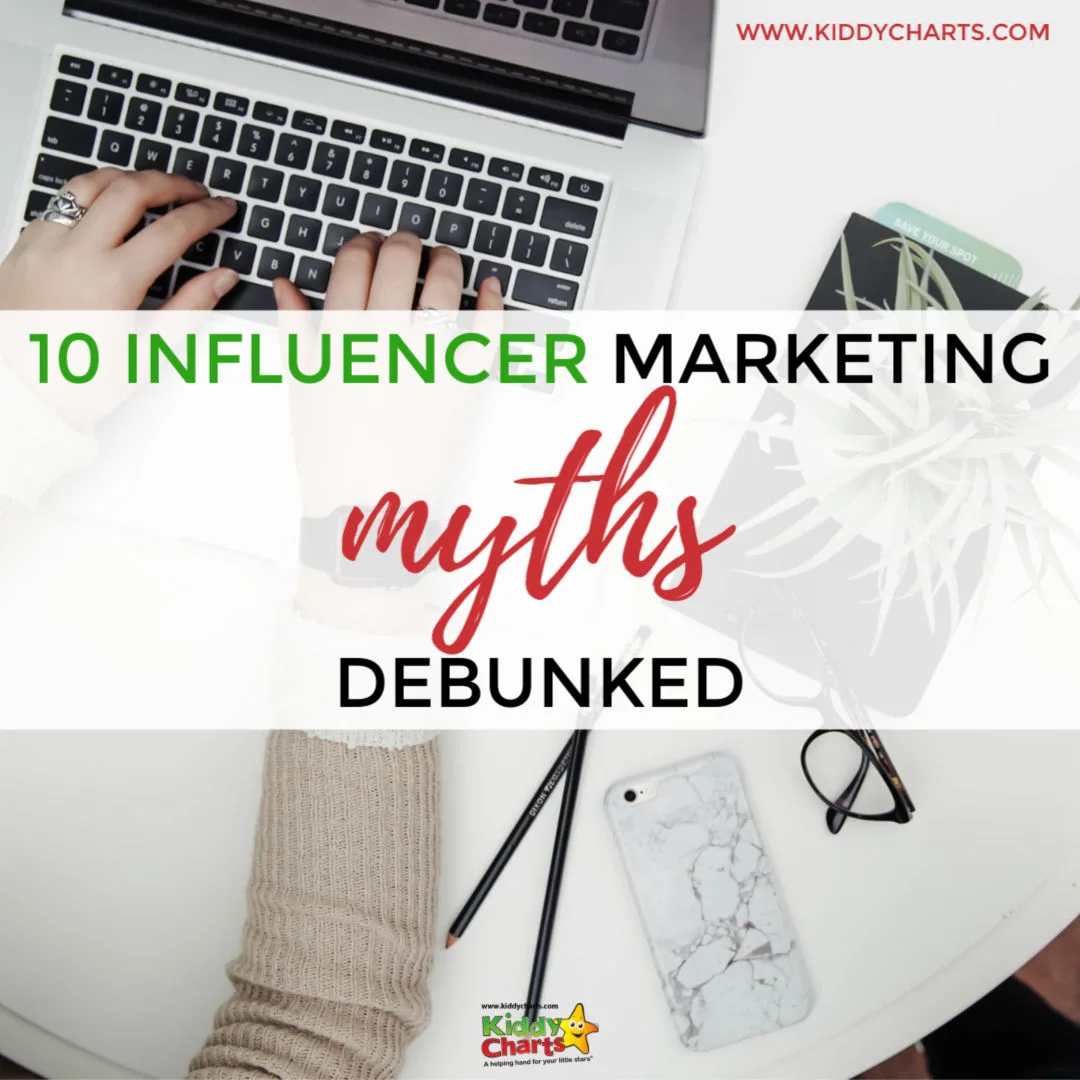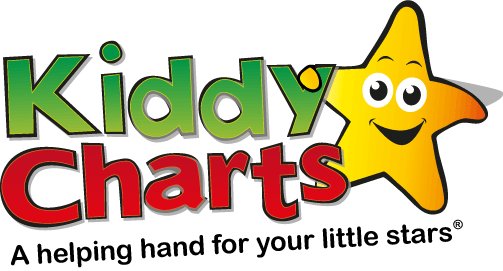It doesn’t take long after googling Influencer or Influencer Marketing to come up with both negative and the positive comment about the sector. With creators, bloggers, vloggers, celebrities and many other sites, individuals and celebrity brands appearing in your search. Even the Sussexes are being touted as the next big “influencers” in waiting. Myths about influencers start at the very top.
The media has portrayed the world of influencer marketing recently in the mainstream press as having no shame, peddling falsehoods; prone to bullying, and in some cases exploitative.
There is a negative side to any large community – just as there is in your school, your workplace, or even down the pub on a Friday night in your own backyard.
Human nature is…well, just human nature.
Whenever there is a group; some of that collective won’t be as kind or thoughtful as one might have hoped.
KiddyCharts counts itself lucky to be part of the influencer community. We have been producing content and growing our followers, fans and engagement since January 2012 when we produced our first blog post launching this site, and the reward charts which we did sell, but are now free for everyone online.
The site and the industry has moved on at a blistering pace since then. Shockingly, we have written 2,233 articles since we launched almost exactly 8 years ago today.
Suspicions are also rife in the influencer community that that first post isn’t perhaps as polished as some of the ones written more recently… 🤪


So what does it mean to be an influencer in 2020 – what have we actually learnt in those years in an ever-changing industry?
What is an influencer?
It is probably important to think first about what an influencer actually is.
According to Google – *god* ish:
“A person or thing that influences another.”
We are all influencers; we chat face-to-face to our peers about the trivial to the critical aspects of our lives to sway opinion, or to voice it; from hand creams, and nail varnish, to successful schools, and political affiliations.
But now Google also includes something else within its definition – focused on marketing:
“A person with the ability to influence potential buyers of a product or service by promoting or recommending the items on social media.”


The definition focuses heavily on products and services, but it’d be fairer to argue that influence extends to actions, activities, and feelings.
It might include:
- Celebrities (from Victoria Beckham, to the Sussexes),
- Social media influencers, such as Saffron Barker, and Joe Sugg, and
- Micro-influencers; those with less than 50,000 followers. This includes KiddyCharts (though we do have more if you include Pinterest), and the majority of other parenting bloggers within the Tots100.
Influencers encompass all these types of creators; from the blogger to the vlogger to royalty! Clearly, this can cause a spot of bother…
I think the problem (with the term influencer) lies with the using it as an umbrella term. Bloggers, vloggers, Instagrammers etc are all very different with different agendas. I consider myself a blogger not an influencer – I could not influence anyone to do anything! It feels like lazy labelling to me.
Anna, Me Annie Bee
Though the industry has moved on – the terminology seems to be taking a little time catching up perhaps?
Myths about Influencers: Inspiration not just influence
Personally, we prefer the term creator to influencer now; this relates so much more to what an influencer actually DOES during the day; creating content, including photos, vlogs, blogs and resources, that tell a story, inspire an activity, or promote the products and services that Google’s definition refers to.
Inspire not influence may be a more appropriate way to define an influencers sway. KiddyCharts creates printables, and articles to inspire our readers to play with their kids, or take a specific approach in the classroom. Others use the written word to inspire thoughts and actions, or even to feel better about themselves.
Influence seems to have negative, and somewhat suspicious connotations, particularly within the media. We aren’t there to trick you into buying the latest gadget, or suck you into the latest scam. We are here to present a viewpoint on a product, share ideas and thoughts, and to inspire your creativity.
The power of an influencer through hashtags and search is to connect and empower. Not to harm and belittle.
Helen Neale, KiddyCharts
Influencers help and educate others, alongside their product promotions.
In fact, a considerable number of them created their online presence with a cause in mind, and not with dollar signs in front of their eyes.
With this in mind – KiddyCharts asked within our creator / influencer community about their influence and….


10 things you thought you knew about influencers but you were wrong
As we have already discussed, influencers and creators have been given a lot of air time. So likely we believe we know a good deal about them, and how they work; even what it takes to become one.
Well, let’s just take a look shall we?
1. Influencers are just in it for themselves
Influencers are a bunch of selfish, shallow money-grabbers…
Or you might think that if you focused on the media coverage of the industry too closely over the last 12 months.
BUT, it is worth taking a much closer look.
Unlike KiddyCharts, Actually Mummy is happy to be called an influencer:
I think the term “Influencer” has been vastly misrepresented in the last few years. Originally it just meant anyone whose opinion people paid attention to, which is basically all of us, at some point. But in recent years it’s been attributed to people who earn a living online through sharing their experiences. And it’s become synonymous with greed and laziness.
I think this is a shame, not only because the vast majority of influencers work very hard to showcase the brands they work with in an honest way, but because it’s giving social media a bad name generally.
Why do I have a problem with that?
Well, because I think most of our lives would be harder without it, in particular those of our teenagers. I’m aware that that’s not a common opinion, but here’s why I think influencers are predominantly a source for good:
Teenagers follow all sorts of instagram accounts that they learn from.
My 12 and 15 year olds follow @Pubity, a meme account about growing up that they find funny – it puts their school and friendship issues into a humorous context, and helps them realise that how they feel is totally normal.
My daughter follows Activismgirl a youth activism account where she reads about diversity, representation, and feminism. She is a thousand times more informed than I was at her age because of accounts like these.
She also follows @sugardropsweetwear, a teenage type 1 diabetic who has a clothing range she likes; it inspires her to see someone else with the same disability as herself talking positively about how she lives her life with the condition, and even uses it to earn a living.
She also follows Love Island, and @inthefrow, where the images she sees are unachievable and highly retouched. However I think we don’t give our teenagers the credit they deserve to make good judgements around influencer accounts like this; she absolutely sees them for what they are, uses them for entertainment, inspiration, or (in the case of Love Island) discussion points about what she values in a person.
Helen, Actually Mummy
Social media and influence is a fact of everyday life. As influencers, perhaps what we need to be doing is helping the vast platforms that we use to talk to our communities with, to better police those communities by both reporting infringements and being vocal in our support of social media and its evolution so that it becomes a safer place for our children.
As much as we don’t want to think this; the people that hang about on social media did also hang around in the 1960s and 1970s without that technology, Plus we had to equip our kids online to watch out for inappropriate behaviour. We need to do the same now, giving them the tools to do so as the platforms evolve.
Helen’s last point is particular pertinent. We do need to have faith that our teenagers, and indeed consumers in general, if educated correctly, recognise inappropriate, fake, or discriminatory accounts or opinions online. The video below has been used in schools as an example of selfish, biased and discriminatory behaviour.
One would imagine that the children found it so appalling, it was like black comedy for them all:
Most of our teenagers really do know fake, and un-acceptable behaviour when they see it, regardless of which platform they are viewing it on.
Rather nice to find a positive from the above video don’t you think?
One of the influencers we chatted to about this article summed up beautifully why she blogs and it is most definitely not for herself:
Blogging is a fantastic platform for sharing, ideas, resources and connecting with people. For me being a blogger/influencer is about engaging people (children especially) with nature and the environment. We protect the things we care about. And in order to get society to care about nature we first have to get them to engage with it.
So I try to engage others in nature by sharing our passion and enthusiasm, showing pictures, sharing stories, activities and ideas, educating and encouraging others to join in.
Gem, Childs Play ABC


2. Anyone can be an influencer
Mainstream media consider influencers are often on the make, and/or just dabbling with creative journalism for their own ends. This means that anyone can have a bash at it, and largely, anyone does and anything goes.
Slouching towards Thatcham clearly states that having real influence in something isn’t a five minute job – you can’t set up an instagram account or a blog, and you are there. It is about solid, hard graft across many hours, just like journalism:
I can think of several influencers who produce content as good as any of their journalistic equivalents. Often more people read their posts than many newspaper or magazine articles. Several are best-selling authors. And guess what? Some bloggers are former journalists too.
And it’s not as if all journalists are Pulitzer Prize winners in waiting, is it? I could point out plenty of examples of hack-job, lowest common denominator trash which is published by so-called serious journalists every day. Pot, kettle, black?
Tim from Slouching Towards Thatcham
There ARE influencers that expect the world without the hard graft, just as there are journalists that do. However, they are not reflective of the wider community. This site, and may others like it has been running for a long time; and has evolved with the creator space.
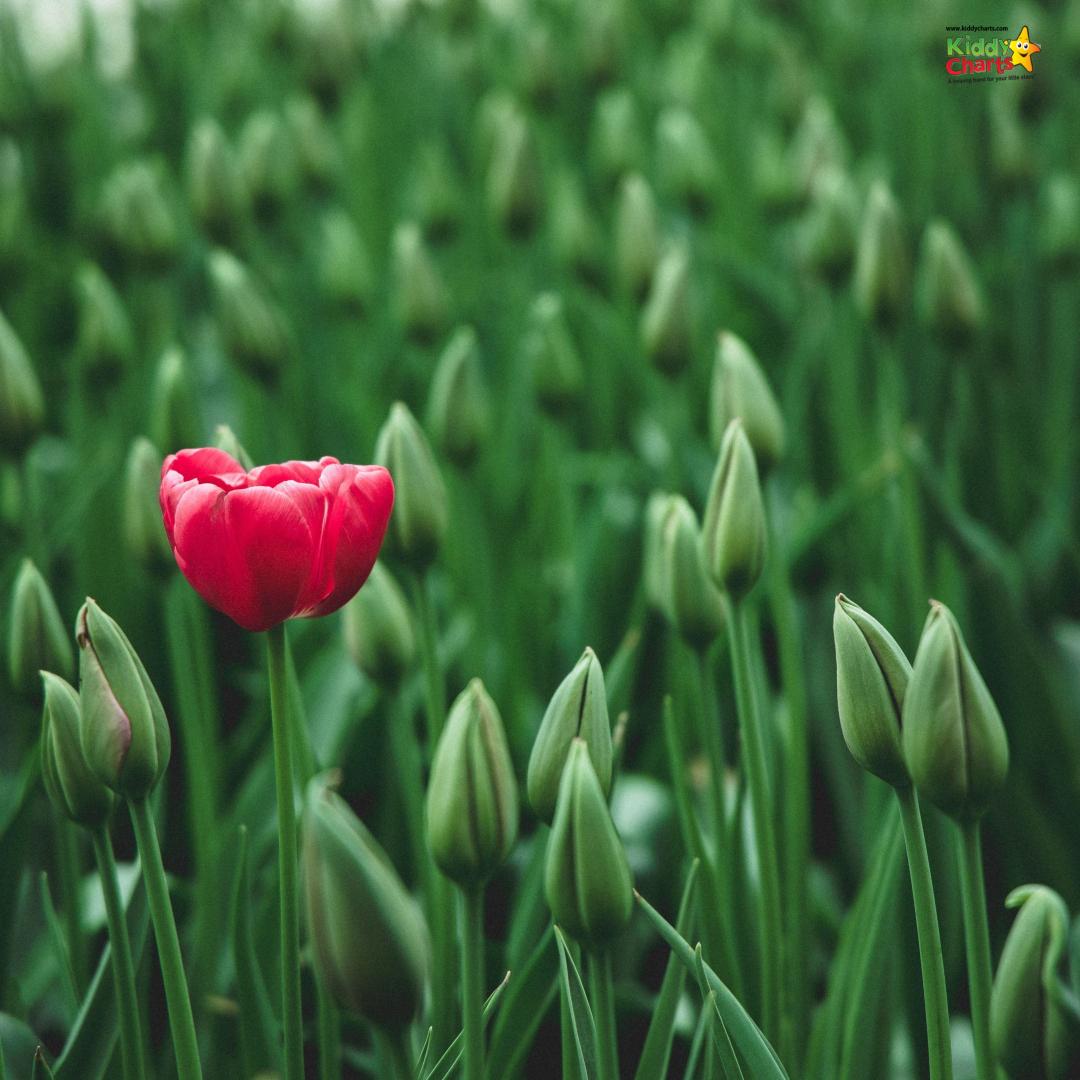

3. Influencers earn £1000s per post then break the rules
KiddyCharts charge per post and or per campaign. It depends on what results brand focus on, the time to make creative (our printables), to take photographs, and then write the social posts and content associated with the campaigns we are involved in.
There ARE other influencers that command high fees – several £1000s per campaign. However, they are likely those that have agents (we don’t), and aren’t sole traders, and those that have built up their following through reality TV, or have massive audiences now on their social channels.
John Adams from Dadbloguk.com feels that the coverage in the media is skewed to those that earn more because:
“Content creators tend to work in isolation so have never been very good at representing themselves in more traditional media.
I’ve long said we need a trade body that can act as the ‘go to’ place for journalists. Until that time, news reporters will simply publish news stories about reality TV celebfluencers because they court the attention and make it easy for the media.
The other thing about celebfluencers is that they often become famous off the back of horrendous, car-crash TV programmes. They haven’t spent years building up a social media following that they feel a duty of care towards because it comes to them via a TV show. They don’t rely solely on their blogs and social media channels as a source of income so they frequently seem to flout ASA and CMA regulations because the consequences aren’t as severe for them.”
John, Dad Blog UK
Most influencers don’t earn £1000s per post, and those that are earning well and have been in the industry for a number of years, tend to declare their ads because of the impact on their earnings, and their follower base which they have spent years building up.
It is also worth remembering that those that complain about can tend to shout the loudest, and trolls can be extremely loud and vociferous.
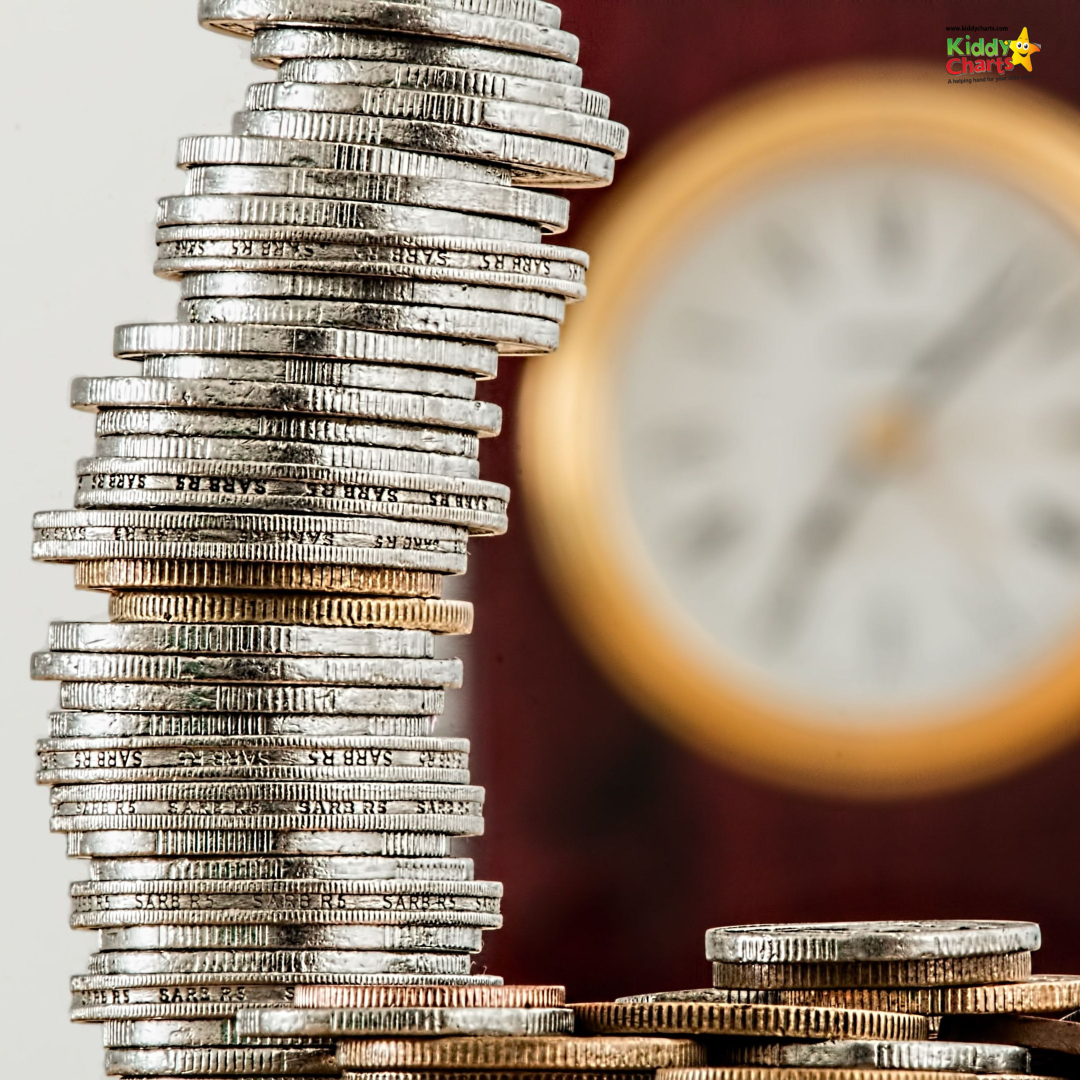

4. Influencers are all about the free product
Influencers get everything for free, and that is ALL we do.
Nothing in life is free. Even though we have potentially been given a product without paying for it; there is a lot that goes into producing a piece of content on that product. To receive it, there has likely been a negotiation, and potentially a contract involved, and from then on it is all about the content creation.
Producing a video can take a number of days, with all the editing requirements, and writing and photographing can easily take the same length of time. I have already spent over a day writing and researching this article so far…..
Products aren’t free. We do work for them. We ARE incredibly grateful for having the opportunity to review and work with the brands that we do. However, we don’t do it for free, and we don’t get the products without the brand, quite rightly, expecting creativity and inspiration in our audience in return.
Another influencer said to me:
It also seems to me that people think we are given stuff for free, when in fact it took me a couple of years before I was offered anything of value. It is hard work building up a following and often for little reward. I certainly put in more than I get out at the moment, but it fits around my life, illness and children
Erica, The Incidental Parent
Many influencers choose to do what they do because it fits in not just with what they want from their career, but because it allows them to be more than an influencer; a wife, a dad, a mother, and to work where perhaps it would have been harder to do so more traditionally due to illness and / or disability.
We don’t tend to work for product at all on KiddyCharts. We are now a social enterprise, so any product we get doesn’t benefit the Reverence for Life charity that we aim to donate at the end of our financial year.
Kiddy Charts occasionally does giveaways and/or reviews for product going to The Toy Project from PRs instead.


5. Influencers have bought all their followers
We said this at the start – there are unscrupulous people in every community. They will try and game the system, and think that it’s OK to pop over to Fiver and buy 10,000 followers on Instagram so they can get that designer handbag.
BUT give the brands some credit.
They aren’t stupid, They KNOW this happens, and there are now so many tools out there that help to spot inauthentic followings that it is actually pretty tough to get past their scrutiny. It does of course happen from time to time, and that’s when it makes the press.
However, for every creator that has cheated, there are literally 100s that are working well, and as intended with brands:
The mainstream media, of course, only ever report about the bad cases, because that’s what drives clicks. But it is true of any industry – and particularly a relatively new one – that for every influencer who gives everyone a bad name, there are a hundred others who are all trying to do the right thing.
But the advertising regulations and best practice guidelines are new and can’t cover every possible scenario, so there is a lot of confusion. It’s the nature of influencers that most are sole traders – larger ones may be represented by an agency, but they’re a small minority. As such, their expertise is in content creation and connecting with their audience.
They are not finance experts or legal experts or even necessarily experienced businesspeople. So laws and regulations are confusing to them, especially when they are trying to deal with a big brand/agency who sends them a 20-page contract full of legalese to sign and then insists that they don’t need to disclose their relationship with them.
Influencers don’t need to be singled out for abuse by the media or blamed for everything that is wrong in the marketing world. They need understanding and support. Clear guidelines. A trade association. Brands and agencies who understand better themselves what the rules of the game are, rather than demanding the impractical (and in some cases illegal).
Both sides point the finger of blame at the other. But the truth is there are faults on both sides.
Influencers need to balance chasing the pay cheque against building meaningful, long-lasting relationships with brands. That includes stopping playing all the games to short-cut their way to success – buying followers, engagement pods and the like.
Tim, Slouching Towards Thatcham


6. Influencer audience size is all that matters
Follower numbers CAN be bought, but engagement is much more difficult to achieve. Real engagement can’t be faked.
We get 50-80,000 views on this site in a month – the vast majority of that is organic, from our newsletter, from social channels, and from Google. We can’t fake that engagement, and we understand what our audience wants; from the other influencers in our community, to the parents and teachers that use our resources.
Micro-influencers have spent years growing their audience; the celebrity influencer may have built their audience in 6 weeks after a stint on a TV show. We know what content works with our audience, and are happy to craft a well thought out campaign that is specific to the needs of that audience; focused on the ultimate goal of the agency or PR we are working with.
Brands and agencies need to understand industry best practice better – and to learn to recognise that quality of followers/engagement is more important than quantity. As long as brands/agencies continue to recruit influencers for campaigns based on how many followers they have, some influencers may still play the follower game to get ahead. It creates a vicious cycle that benefits no one and ultimately undermines the credibility of the industry. But the industry *is* starting to recognise what needs to change. There are tools available to help vet the authenticity and effectiveness of an influencer and their audiences. Brands are starting to recognise that working with ten smaller micro-influencers can deliver better content and returns than signing up a big celebrity influencer.
Tim, Slouching Towards Thatcham
Brands are using tools like Upfluence, Social Chain and Fohr to see audience authenticity.
Would brands rather a 0.1% engagement rate with a big influencer, or 10 micro-influencers with 3-5% engagement rates?


7. Influencers are all the same
No. and erm. No. The depiction of the influencer as all of the above is leading to sweeping generalisations about them and this is actually the saddest misconception of them all.
Influencers and the community we all belong to celebrates diversity.
It is the lifeblood of our creativity.
If you don’t like what you hear or see in mainstream media – you turn it off, you shut the book, you look for more magazine/program/channel/resources.
This is precisely the same within the influencer space. If you don’t like what you see on this site, don’t worry – that’s fine. There is another creator that will provide what you need. We are happy to have had you while you thought we were relevant and interesting.
Move on, we’re good with that. We can all move on gracefully of course – without the need to troll.
Just as everything in life, influencers are here for you when you need them, for the period of time that they enrich your life. Social media has enabled us to reach out in our wonderfully diverse world and find those like minded people that we need at any given time.
That is the power of the hashtag and search to connect and empower. Not to harm and belittle.
Influencers may sell products and services that are relevant to their diverse corner of the internet, but they also inspire, and empower – sharing their stories to help others through trying times. And helping people to feel a real sense of belonging.
No matter how different you might feel, there is an influencer or just another instagrammer or pinner, out there going through the same. We can search them out, follow them when we need to, and pass on by when it is time to do so.

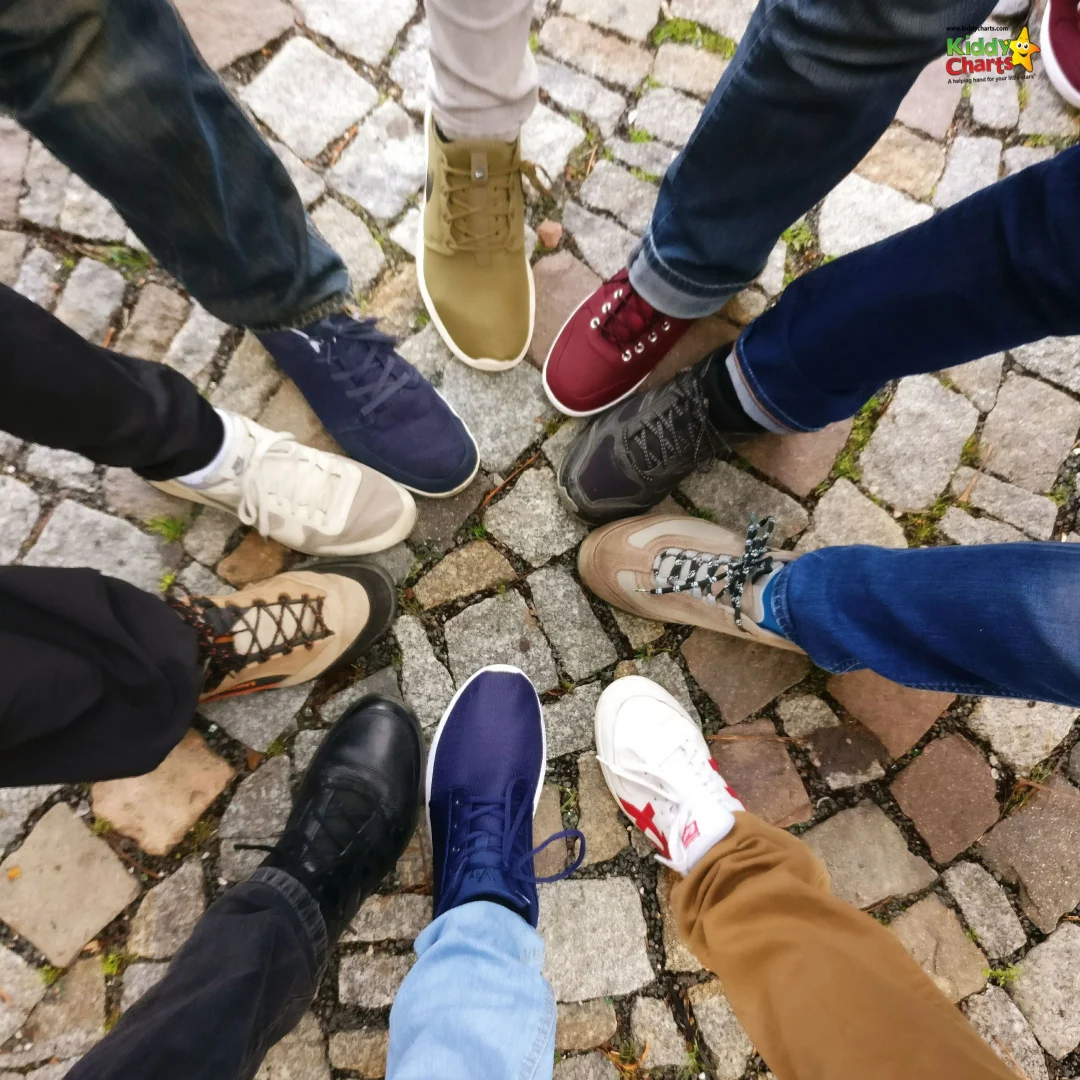
8. You can’t measure influencer marketing
Brands can measure the success of influencer marketing, as long as there is a plan.
They have to know what they are measuring before they start, and to try and be clear to the influencers being worked with what that focus is before the campaign starts.
Authentic, beautifully crafted user generated content is invaluable to brands, and can be used in their own advertising, or pushed wider through paid campaigns on an influencers own account.
KiddyCharts have often advised their clients on the perils of the last click attribution in influencer campaigns.
Media consumption is far too complicated now to be able to link the last action before a sale only to that sale. Last click attribution is further complicated by the continued clamp down on privacy in Europe and the US.
Influencer campaigns are only now being more measured through key performance indicators (KPIs) that are more focused on raising brand awareness over a period of time, and not immediate impact on the bottom line.
Even retailers struggle to measure direct sale impacts of influencer and sampling campaigns, despite their complex Point of Sale systems.
Reach, views, and clicks to a piece of content are becoming much more the norm for measurement of success, alongside an overall uptick in product sales and visibility.
In some cases it is the content itself that is the end result, and that content can then be used by the brand for its own advertising.
One of the most common errors I see among marketers is that they will develop an influencer campaign targeting brand awareness and then state ‘increased sales’ as their key target – mostly because that’s what a senior manager has told them is most important. This is patently ridiculous. You can’t easily guarantee that there is a causal link between someone seeing an influencer post and a sale. You can’t just say event X was caused by marketing campaign Y. It’s more complex than that – and to even attempt to do so ignores many of the other benefits of using influencers
Tim, Slouching Towards Thatcham
9. Influencers only talk about the positive
Influencers only show the perfect. They NEVER show the reality of the real world, and all its troubles.
This. Is. Clearly. Wrong.
Maggie says:
Alongside the homeschooling and educator bloggers like ourselves, there are many that tell harrowing, and life changing stories. They do this to help and support others that are going through similar events, or challenges.
Instagram accounts like Ellie’s that talk openly about baby loss can be a beacon of support and love. Especially at a time when parents often feel like there is no light and no hope.
This is, of course, only one stark example of where instagram has helped. But there are many, many others within the blogging, vlogging, and influencer community.
All you have to do is look for it.


10. Nobody really cares anyway
There are enough people that benefit from following influencers and creators globally for it to be blatantly obvious that people DO care.
If you look below the media-fuelled surface of influencer marketing, you will find something a little different, something to be cherished…
A vibrant, loving community that it is an honour to be part of.


We hope you enjoyed this article. It is long, so thanks for making it this far.
By the way – it took a day and a half (including some weird hours!) to write it all. 🤪
If you want to take a look at some of the other content we have written on the influencer space do feel free.
More content on influencers
We have written a number of articles on the influencer marketing industry - why not take a look?
Parent blogger and influencer rankings explained
We have looked at blogger and influencer rankings and explained them, so you don't get too confused...like we did at first!
15 parent blogger rankings worth spending time on
Here are some of the rankings out there in the parent blogging niche.
What parent bloggers and influencers really think of rankings
And finally, what do other parent creators and bloggers think of them.
If you like this, and our parenting content and printables, sign up to our newsletter.
See you on the site again soon.
Helen

